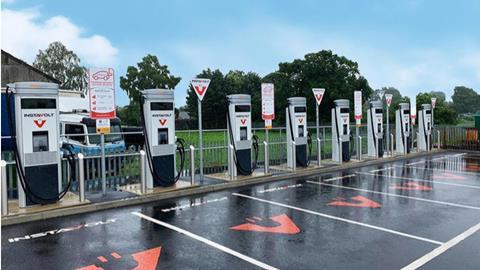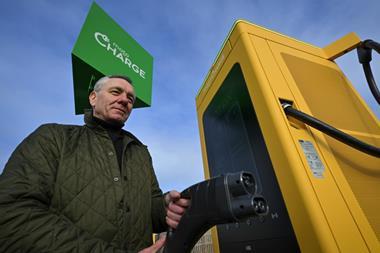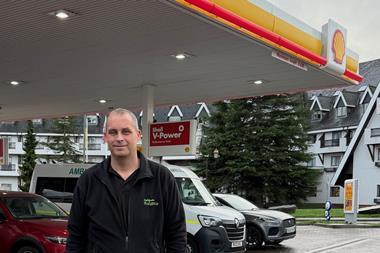
Usage of ultra-rapid chargers jumped to 27% of electric vehicle drivers – up from 16% last year – according to Zap-Map’s latest EV Charging Survey.
It also revealed high satisfaction among EV drivers, who are increasingly confident about driving long distances, with less than 1% wanting to go back to petrol or diesel; plus a new top 18 ranking of charging networks based on driver satisfaction, with MFG EV Power coming second in the ranking behind InstaVolt and ahead of Osprey.
The annual report by the app and digital platform for EV drivers, aims to provide direct insight into the experience and behaviour of EV drivers and how their behaviour is changing over time.
Based on the responses of more than 3,000 EV drivers across the UK, the latest study revealed new trends in charging behaviour – most notably in the area of high-powered ‘en-route’ charging and the increasing popularity of charging hubs.
With the vast majority of EV drivers (93%) continuing to use the UK’s public charging networks, and 40% using public chargers at least once a week, the survey found a significant increase in both the installation and usage of high-powered/ultra-rapid charging devices across the country in 2021.
While rapid chargers (25kW – 99kW) are still used by the most EV drivers overall, the survey found that the usage of ultra-rapid chargers jumped to 27% of EV drivers – up from just 16% in the previous survey.
The report claims that this increase in usage is being driven by the growing number of ultra-rapid chargers that are now available to use, with the number of ultra-rapid devices available growing by 60% in 2021. However, the report states that it also provides a clear indication that the new ultra-rapid chargers are fulfilling demand from EV drivers travelling longer distances, with most new EVs now able to charge at the higher speed.
Ultra-rapid devices are 100kW+ chargers, and are prime examples of ‘en route’ charging, when drivers want to charge their EV as quickly as possible. For this reason, and because drivers want to be confident that such devices will be available to use upon arrival, another trend the survey highlights is the growth in popularity of EV charging ‘hubs’.
Typically, made up of between four and 10 charging devices, these hubs predominantly feature rapid or ultra-rapid devices that should enable drivers to add between 70 and 200 miles of charge in around 30 minutes.
As a result, the survey also found that networks installing these charging hubs saw particularly high increases in demand from EV drivers. Insta Volt, for example, leapt up to 42% of EV drivers – from 26% previously. Gridserve Electric Highway too, at 29%, proved popular for its first year, while high-powered networks Ionity and Osprey also saw remarkable increases in the proportion of EV drivers using their chargers.
While charging hubs demonstrated the most growth in terms of usage, supermarkets and motorway service areas retained the top two positions, with 52% and 50% of respondents respectively saying they regularly used these types of location.
Supermarkets have seen a significant increase in charge points being installed, and charge points at motorway service areas have seen charging facilities being upgraded over the last year by Gridserve.
In addition, both retail and public car parks remain popular locations for charging, although usage has dipped in the last year.
Melanie Shufflebotham, Zap-Map co-founder and COO, commented: “As the number of EV drivers on the road approaches half a million, a robust charging infrastructure is essential, and the public charging network is growing and developing to meet these changing needs. This new survey shows that the 60% growth in high-speed ultra-rapid chargers and the installation of charging hubs across the UK in 2021 are being used by an increasing proportion of EV drivers.
“We know that EV charging use cases are diverse, as the survey makes clear, and we absolutely need a range of charge speeds to match them. However, amongst other considerations, the demand for high-powered chargers revealed in this report indicates that ultra-rapid chargers and charging hubs continue to be a crucial area of investment – for the simple fact that they make long journeys easier.”



























No comments yet